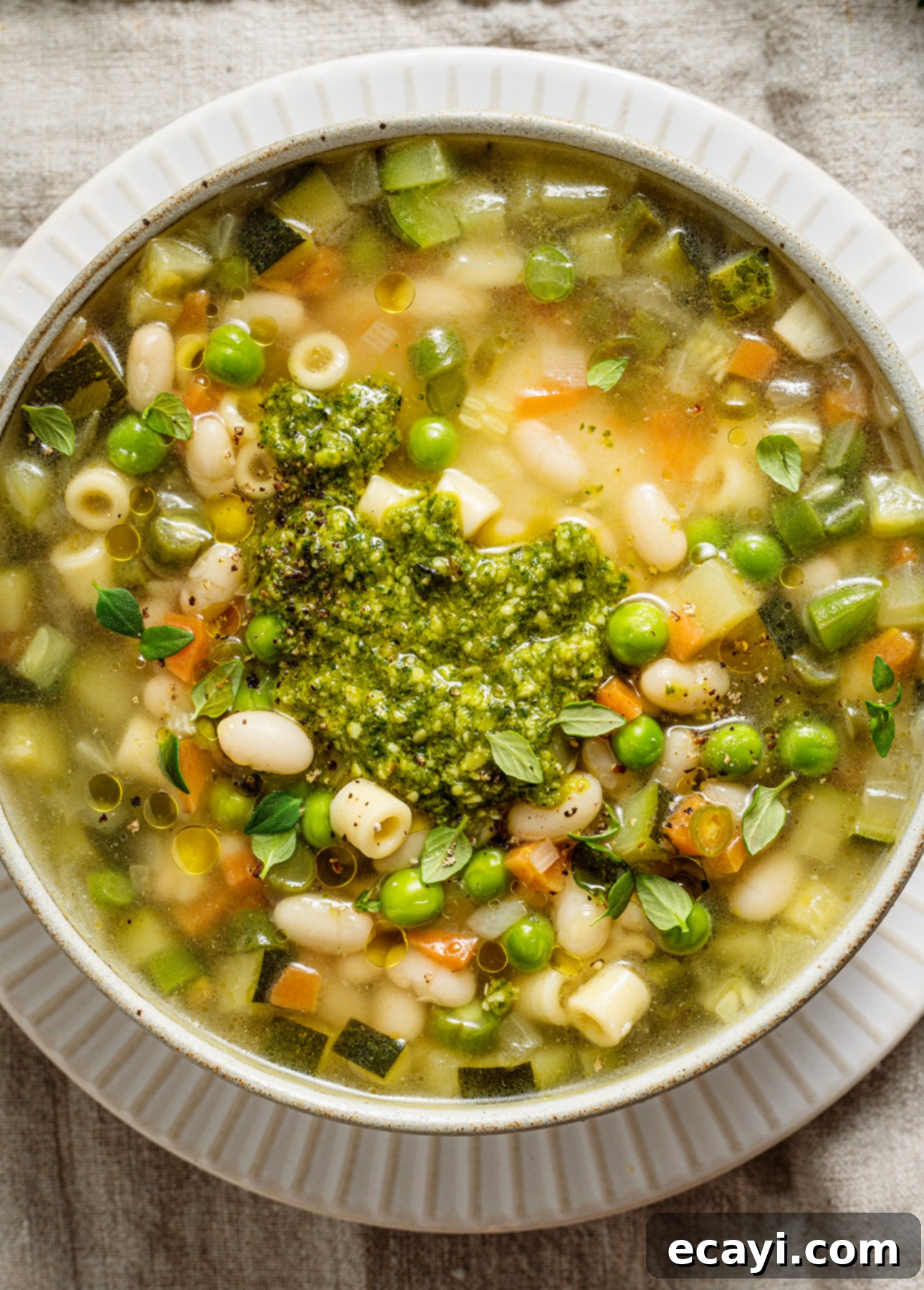Authentic Soupe au Pistou: A Vibrant French Summer Vegetable Soup with Homemade Pistou
Soupe au Pistou is a cherished classic French soup, epitomizing the vibrant flavors of summer with its abundance of fresh vegetables and aromatic herbs. This hearty yet light creation is elevated by its namesake, a bright and savory pistou, which you’ll undoubtedly want to savor by the spoonful!
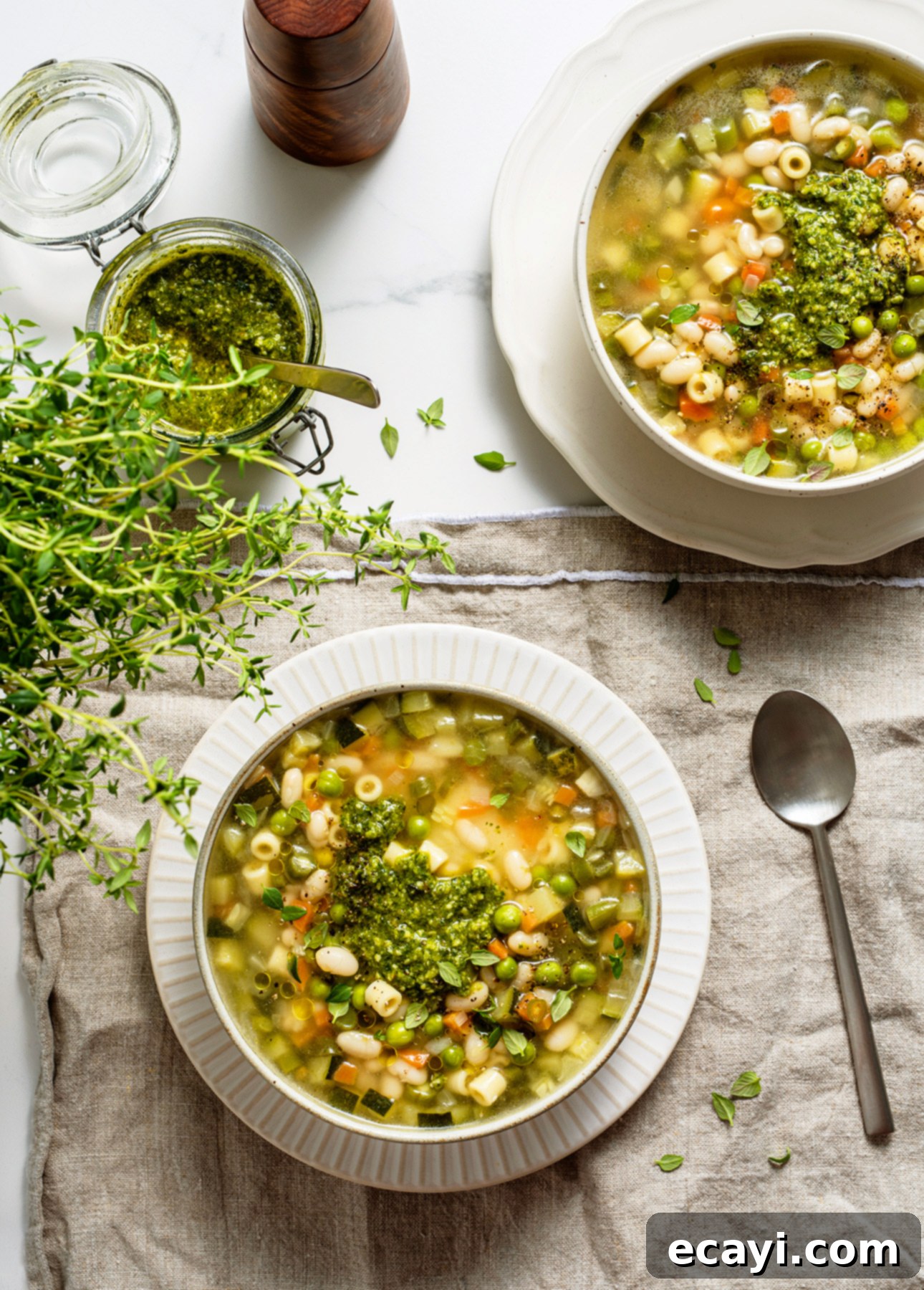
This post contains affiliate links. Full disclosure is at the bottom of the article.
My journey with Soupe au Pistou began years ago when I stumbled upon a captivating recipe by the renowned David Lebovitz. From that moment on, it quickly transformed into a staple in my kitchen, prepared countless times throughout the warmer months. This soup has truly become my quintessential warm-weather companion: it’s delightfully light-bodied, bursting with an array of seasonal vegetables—making excellent use of anything your CSA basket might offer!—and crowned with a luscious, fragrant condiment that you’re guaranteed to adore. For those unfamiliar, pistou is France’s delightful answer to Italy’s pesto, with a key distinction: it traditionally incorporates fresh tomato and typically omits nuts. I emphasize “traditionally” because, like many time-honored recipes, its ingredients can beautifully vary from one family to another and across different regions of France, each adding their unique touch.
This vibrant vegetable soup originates from the sun-drenched region of Provence, where fresh basil, garlic, and ripe tomatoes are abundant. It’s more than just a meal; it’s a celebration of the harvest, a symphony of simple, wholesome ingredients coming together to create something truly extraordinary. The beauty of Soupe au Pistou lies in its adaptability. As the seasons change, so too can the vegetables that fill its broth, ensuring that it always tastes fresh and exciting. However, it truly shines in summer when ingredients like zucchini, green beans, and peas are at their peak, offering maximum flavor and nutritional value.
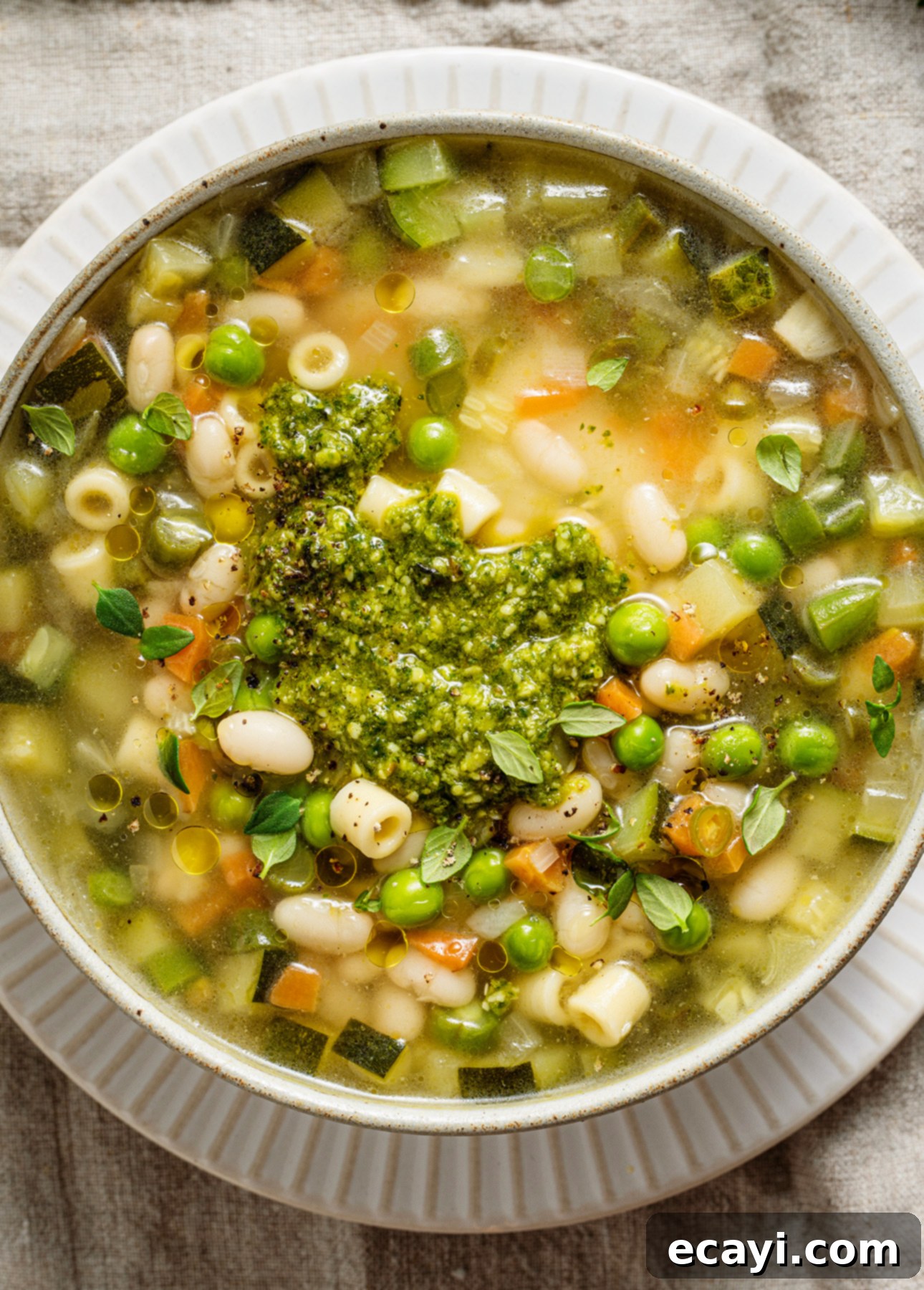
If you’re eager to delve deeper into the rich origins and cultural significance of Soupe au Pistou, and understand why it holds such a special place in the hearts of the French, I highly recommend picking up a truly fascinating book by my friend Ann Mah: Mastering the Art of French Eating: Lessons in Food and Love from a Year in Paris. Ann dedicates an entire chapter to this beloved recipe, recounting her incredible journey of being invited into the kitchen of the very lady responsible for organizing the annual Soupe au Pistou festival in Bonnieux, a charming town nestled in Provence, where this iconic soup originated. As she found herself chopping hundreds of pounds of vegetables—an effort to prepare enough soup for the entire village!—Ann was immersed in a unique culinary schooling experience. Initially, the group of local Provençal women eyed her with suspicion, wondering, “What is an American woman doing in our kitchen?” However, her genuine curiosity and infectious enthusiasm quickly won them over. It’s a delightful story that not only highlights the importance of preserving culinary traditions but also beautifully illustrates how food can bridge cultural divides and foster connections. Ann’s narrative provides a charming insight into the authentic, community-driven spirit behind French cuisine.
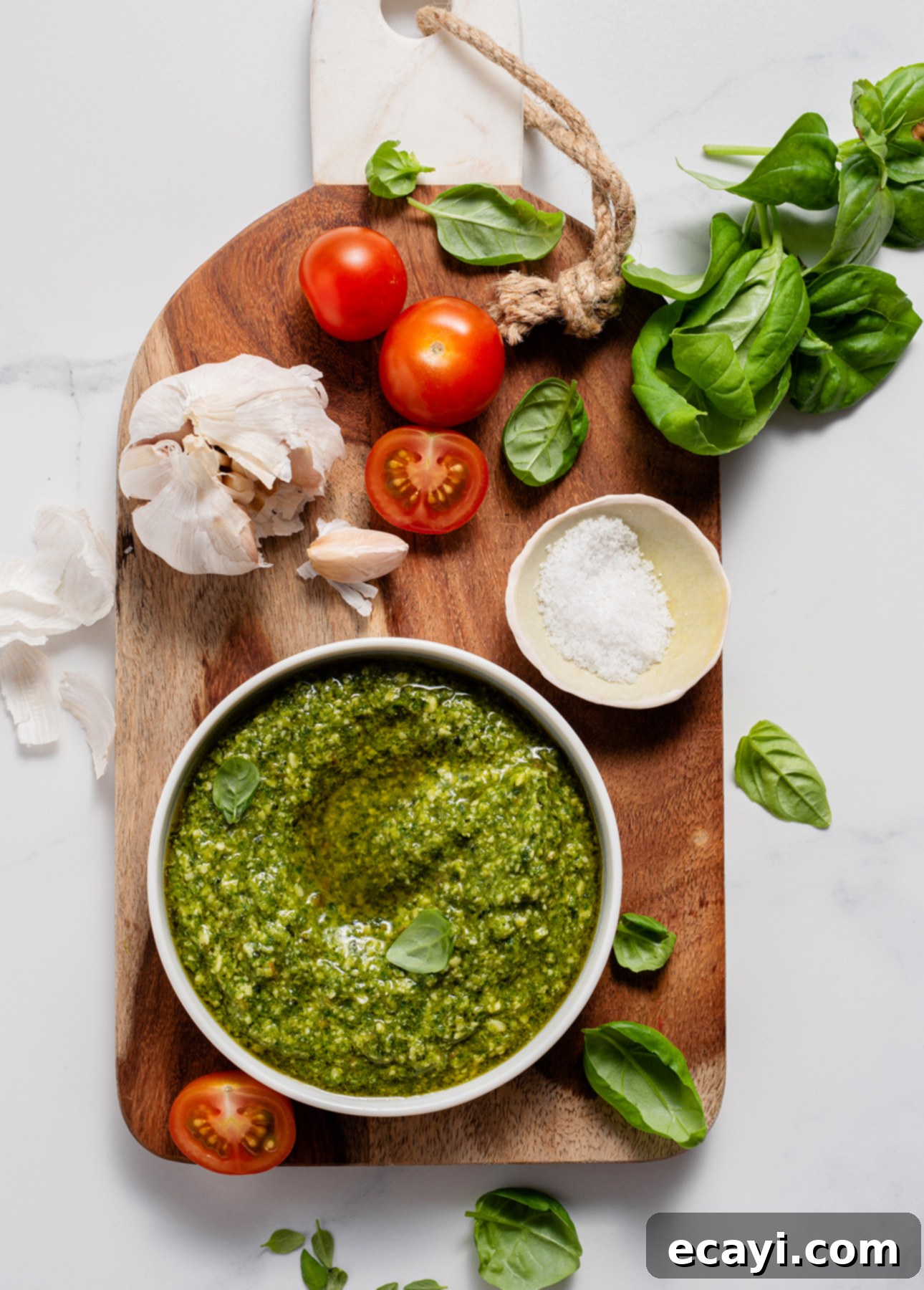
Now, let’s circle back to my personal take on this wonderful soup: I must confess that for a period, I frequently resorted to using canned beans in my Soupe au Pistou, primarily because I consistently forgot the crucial step of soaking dry beans overnight. However, my culinary habits underwent a significant shift after I discovered the quick-soaking method, which has brought me back to exclusively using dry navy beans every single time! Dry navy beans offer a superior texture and a more authentic, satisfying mouthfeel to soupe au pistou. So, if you can spare the additional hour that the quick-soaking method requires, I wholeheartedly encourage you to take the traditional route. The difference in quality and flavor is truly noticeable and well worth the minimal extra effort. You’ll find detailed instructions for how to quick-soak navy beans directly within the recipe below, making it easy for you to achieve perfect results.
What is Pistou?
Pistou is a vibrant, uncooked sauce originating from the Provence region of France, primarily made from fresh basil, garlic, and olive oil. Its name comes from the Provençal word “pistar,” meaning to pound or crush, referring to the traditional method of preparing it with a mortar and pestle. Unlike its Italian cousin, pesto, pistou typically highlights the pure, aromatic essence of basil and garlic without the addition of pine nuts. Often, a small amount of fresh tomato is blended in, adding a subtle tang and lovely color, making it a uniquely French condiment.
What’s the difference between French pistou and Italian pesto?
Many people assume pistou and pesto are simply different names for the same sauce, hailing from distinct countries. While they share a similar base and preparation method, the distinction is quite important, though often subtle. The primary difference lies in the ingredients: traditional French pistou does not include pine nuts, a staple in Italian pesto, and the inclusion of cheese, specifically Parmigiano-Reggiano, is optional. While pesto almost always contains Parmesan or Pecorino, pistou often omits it, focusing instead on the fresh, potent flavors of basil and garlic. However, just like all traditional recipes, there are many variations of pistou. My preferred version, much like how the legendary Julia Child made hers, includes a touch of fresh tomato flesh blended in. This addition contributes a wonderful depth of flavor and a lovely hint of acidity that truly brightens the sauce.
How to store pistou to prevent it from browning
Storing your homemade pistou correctly is key to maintaining its vibrant green color and fresh flavor. When you transfer pistou to a jar for storage, a simple yet effective trick is to pour a thin, protective layer of extra-virgin olive oil over the top, ensuring that the entire surface of the pistou is completely covered. This layer of oil acts as an airtight seal, preventing oxygen from reaching the delicate basil and thus effectively stopping it from oxidizing and turning brown. This method will keep your pistou looking and tasting fresh for several days in the refrigerator.
Can pistou be frozen?
Absolutely! Freezing pistou is an excellent way to preserve the taste of summer for months to come. To freeze pistou effectively, spoon it into an airtight container or even ice cube trays for convenient single servings. Before sealing, remember to pour a thin layer of olive oil over the top, just as you would for refrigeration, to create that vital airtight seal and prevent browning. Once covered with oil, seal the container tightly and freeze for up to 3 months. When you’re ready to use it, frozen pistou will thaw beautifully overnight in the fridge, or within approximately 1 hour if left at room temperature, ready to elevate your next meal.
Serving Suggestions for Soupe au Pistou
Soupe au Pistou is a meal in itself, but it can be wonderfully complemented by simple additions. Serve it with a crusty French baguette to sop up every last drop of the flavorful broth. A light green salad with a simple vinaigrette dressing makes an excellent side, adding another layer of freshness. For a more substantial meal, consider adding a side of goat cheese crostini or a plate of cured olives. Remember, the true star is the soup and its vibrant pistou, so keep accompaniments understated to let those flavors shine.
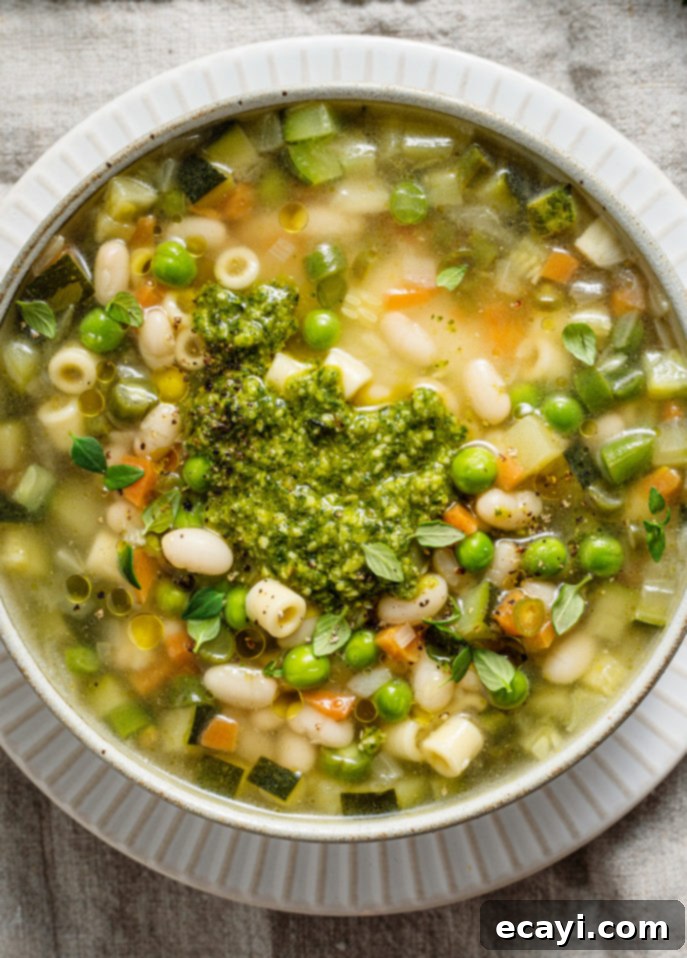
Pin Recipe
Soupe au pistou (French Vegetable Soup)
Ingredients
For the soup
- 1 cup dry white navy beans, or one 14 oz (400 g) can navy beans, drained and rinsed
- 2 bay leaves
- 3 tbsp extra-virgin olive oil
- 2 medium onions, peeled and diced, or 4 leeks, cleaned and sliced
- 2 tsp fresh thyme leaves
- 2 medium carrots (6 oz/170 g), peeled and diced
- 2 medium zucchini (1 lb/450 g) diced
- ½ lb green beans, tips removed and cut crosswise into quarters
- 6 cloves of garlic, peeled and minced
- 1 tbsp fleur de sel, or fine sea salt
- 2 qt low-sodium vegetable stock, or low sodium chicken stock
- 1 cup fresh or frozen peas
- 1 cup short dry pasta, such as orzo, vermicelli, elbows, or shells
For the pistou (makes about 1 cup / 250 ml)
- 1 large clove of garlic, peeled
- 1 tsp fleur de sel, or fine sea salt
- 2 cups packed fresh basil leaves, chopped
- 1 small tomato, peeled, seeded, and diced
- 1 ½ oz finely grated Parmigiano-Reggiano cheese
- ¼ cup extra-virgin olive oil
Instructions
-
Soaking the Navy Beans (skip if using canned beans): Rinse and sort the beans thoroughly. Place the beans in a large bowl, cover them generously with cold water, and let them soak overnight (about 8-12 hours). The next morning, drain the soaked beans, rinse them well under cold water, and they will be ready to use as directed in the recipe below.
-
Quick-Soak Method: If you’re short on time, use the quick-soak method. Rinse and sort the beans, then transfer them to a saucepan. Cover the beans with about 2 inches (5 cm) of water. Bring the water to a rolling boil and maintain the boil for exactly 1 minute. Turn off the heat, cover the saucepan with a lid, and let the beans rest undisturbed for 1 hour. After an hour, drain the beans, rinse them well, and they are ready for cooking.
-
Cooking the Navy Beans: Once the beans are soaked (either overnight or via the quick-soak method), transfer them to a large saucepan. Add the bay leaves and enough fresh water to cover the beans by approximately 2 inches (5 cm).
-
Bring the beans to a boil over high heat. Once boiling, reduce the heat to a gentle simmer and cook for about 15 minutes. After simmering, remove the saucepan from the heat, cover it, and set it aside while you proceed with preparing the rest of the soup. The beans will continue to gently cook in their residual heat.
-
Make the Soupe au Pistou: In a sturdy Dutch oven or a large stockpot, heat the extra-virgin olive oil over medium heat. Add the diced onions (or sliced leeks) and cook, stirring occasionally, until they become soft, translucent, and fragrant, usually about 5-7 minutes.
-
To the pot, add the fresh thyme, diced carrots, zucchini, green beans, minced garlic, and salt. Season generously with freshly ground black pepper. Cook the vegetables, stirring periodically, for approximately 10 minutes, or until they begin to soften. Pour in the low-sodium vegetable or chicken stock and stir to combine all ingredients. If you are using dried beans prepared earlier, add the cooked beans along with their cooking liquid now. If using canned beans, drain and rinse them thoroughly before adding them to the pot. Finally, stir in the fresh or frozen peas and your chosen short dry pasta. Bring the soup to a boil, then reduce the heat and simmer gently for about 5 minutes, or until the pasta is cooked al dente.
-
Make the Pistou: In a food processor, combine the large peeled garlic clove with a generous pinch of salt. Pulse until the garlic is finely chopped. Add the packed fresh basil leaves, diced peeled and seeded tomato, and the finely grated Parmigiano-Reggiano cheese (if using). Pulse again until the mixture forms a relatively smooth consistency. With the food processor running, gradually drizzle in the extra-virgin olive oil to blend all the ingredients together and emulsify the pistou. Taste the pistou and adjust seasoning with more salt if desired.
-
SERVING: Ladle the hot, comforting soup into individual bowls. Crown each serving with a generous spoonful of the freshly made pistou. It’s highly recommended to keep extra pistou readily available at the table, as guests will likely want to add more to their soup as they enjoy it. Serve immediately and savor the taste of Provence!
-
MAKE IT DAIRY-FREE & VEGAN: To adapt this recipe for a dairy-free and vegan diet, ensure you use vegetable stock instead of chicken stock. For the pistou, replace the Parmigiano-Reggiano cheese with an equal amount of nutritional yeast for a cheesy flavor, or simply omit the cheese entirely. The soup will still be incredibly flavorful.
-
MAKE IT GLUTEN-FREE: To make this Soupe au Pistou suitable for a gluten-free diet, simply ensure that you select a gluten-free variety of short pasta. Many excellent options are available today that will perform just as well as traditional pasta in this soup.
Did you make this?
Tell me how you liked it! Leave a comment or take a picture and tag it with @foodnouveau on Instagram.
Disclosure Notice: This site is a participant in the Amazon Associates Program, an affiliate advertising program designed to provide a means for the site to earn fees by linking to Amazon and affiliated sites.
If you click on an affiliate link, I may earn advertising or referral fees if you make a purchase through such links, at no extra cost to you. This helps me creating new content for the blog–so thank you! Learn more about advertising on this site by reading my Disclosure Policy.
